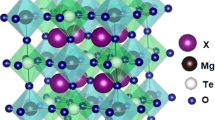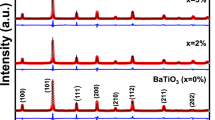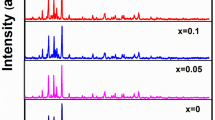Abstract
Because of its high electrical conductivity and good diffusion barrier properties ruthenium dioxide (RuO2) is a good electrode material for use with ferroelectric lead zirconate-titanate (PZT) solid solutions. Under certain conditions, RuO2 can react with PZT to form lead ruthenate (Pb2Ru2O6·5) during processing at elevated temperatures resulting in lead depletion from PZT. The standard Gibbs energies of formation of RuO2 and Pb2Ru2O6·5 and activities of components of the PZT solid solution have been determined recently. Using this data along with older thermodynamic information on PbZrO3 and PbTiO3, the stability domain of Pb2Ru2O6·5 is computed as a function of PZT composition, temperature and oxygen partial pressure in the gas phase. The results show PbZrO3-rich compositions are more prone to react with RuO2 at all temperatures. Increasing temperature and decreasing oxygen partial pressure suppress the reaction. Graphically displayed are the reaction zones as a function of oxygen partial pressure and PZT composition at temperatures 973,1173 and 1373 K.
Similar content being viewed by others
References
Al-Shareef H N, Bellur K R, Auciello O and Kingon A I 1995 Thin Solid Films 256 73
Bencan A, Hrovat M, Holc J and Kosec M 2001 J. Eur. Ceram. Soc. 21 1451
Hardy H K 1953 Acta Metall. 1 202
Hrovat M, Holc J and Kolar D 1994 J. Mater. Sci. Letts 13 1406
Hrovat M, Bencan A, Holc J and Kosec M 2001 J. Mater. Sci. Letts 20 2005
Ikeda T, Okano T and Watanabe M 1962 Jpn. J. Appl. Phys. 1 218
Jacob K T and Shim W W 1981 J. Am. Ceram. Soc. 64 573
Jacob K T and Rannesh L 2007 Mater. Sci. & Engg. B140 53
Jacob K T and Subramanian R 2007 J. Mater. Sci. 42 2521
Jacob K T, Mishra S and Waseda Y 2000a J. Am. Ceram. Soc. 83 1745
Jacob K T, Jayadevan K P, Mallya R M and Waseda Y 2000b Adv. Mater. 12 440
Jacob K T, Saji V S and Waseda Y 2006 High Temp. Mater. Process 25 203
Kim S T, Kim H H, Lee M Y and Lee W J 1997 Jpn. J. Appl. Phys. 36 294
Kim S H, Hong J G, Streiffer S K and Kingon A I 1999 J. Mater. Res. 14 1018
Law C W, Tong K Y, Li J H and Poon M C 1999 Thin Solid Films 354 162
Park Y, Jeong S M, Moon S I, Jeong K W, Kim S H, Song J T and Yi J 1999 Jpn. J. Appl. Phys. 38 6801
Seong N J, Choi K J and Yoon S G 2004 Thin Solid Films 468 100
Shim W W and Jacob K T 1982 Can. Metall. Quart. 21 171
Taylor D J, Larsen P K, Dormans G J and Veirman A E 1995 Integr. Ferroelectr. 7 123
Author information
Authors and Affiliations
Corresponding author
Rights and permissions
About this article
Cite this article
Jacob, K.T., Rajitha, G. & Saji, V.S. Compatibility of RuO2 electrodes with PZT ceramics. Bull Mater Sci 32, 313–319 (2009). https://doi.org/10.1007/s12034-009-0045-5
Published:
Issue Date:
DOI: https://doi.org/10.1007/s12034-009-0045-5




